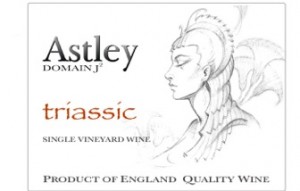We are working closely with Astley Vineyards to promote a special wine called Triassic. Located on Bromsgrove Sandstone the vineyards portray that wonderful association between geology, landscape and land-use.
Astley Vineyards, one of England’s oldest surviving vineyards, was started by viticultural pioneer Michael Bache in 1971. Although for that time, N.Worcs would have been considered far too northerly for successful wine grape growing, Bache’s dedication to his task paid off as the wines produced won wide recognition and acclaim nationally and internationally.
The vineyards comprise 5 acres established on Triassic red sandstone loams on a slightly NE facing slope within half a mile of the River Severn, 3 miles south of Stourport-on-Severn, in North Worcestershire. Prior to being a vineyard, the field was a traditional English cherry orchard, eventually removed courtesy of the 1947 Agricultural Act’s grubbing up grant. The basic terroir has therefore a history of minimal intervention and apart from tile drainage, remains so. It is inherently low yielding and the current viticultural practice is designed to maintain low yields to maximise wine quality. Adjacent to the vineyards, a small stream has cut an intimate valley into the soft rocks. This feature acts as a drain for both rain and frost thereby serving as a critical positive factor in the vineyard’s success.
The purpose of all wine production should be the creation of a product that contains some unique essence of where it was grown. Astley’s “Triassic” dry white wine, a blend dominated by the Siegerrebe grape, is named after the vineyard soil’s parent material to reflect the influence of local geology on the character of the wine.
The wine can be purchased from the shop at Bewdley Museum where there is also more information about the geology of the Geopark.





